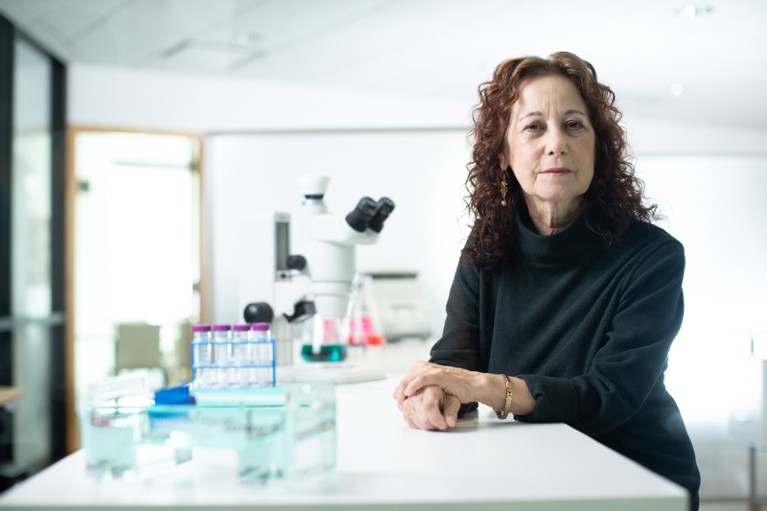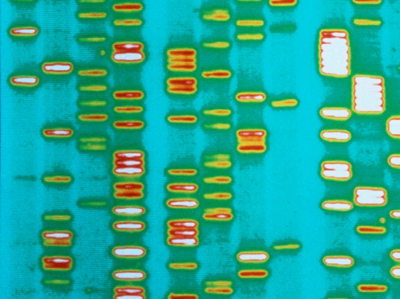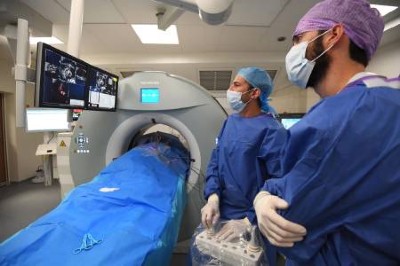
Credit: Buck Institute
Judith Campisi was the first to show that cellular senescence, a state in which body cells cease to divide but do not die when they should, has both detrimental and beneficial consequences. Senescent cells accumulate in many ageing tissues, where they exert adverse effects. Yet, senescence can also have positive effects, most notably in preventing cancer — even though it might also facilitate it. Campisi elevated senescence from a phenomenon in cell culture to one of great importance for health and disease. She has left researchers with a vista of interventions that can help to extend people’s healthy lifespan.
In the 1960s, US anatomist Leonard Hayflick showed that cultured human fibroblasts (cells derived from connective tissue) do not grow indefinitely, as was generally thought at the time, but cease dividing at a certain point. This process of cellular senescence in a culture dish was soon considered a model for human ageing.
Campisi recognized the need for reliable markers for identifying senescent cells in tissues, and in 1995, her laboratory reported one that became standard: the lysosomal enzyme, senescence-associated β-galactosidase. She also realized that heterogeneity complicates the identification of senescent cells. She was still working on defining the states of senescent cells when she died at the age of 75.
It’s time to admit that genes are not the blueprint for life
Campisi was born in New York and studied chemistry at the State University of New York at Stony Brook. She paused her studies to tour as a singer and guitarist in a folk band before returning to complete her PhD. She then did postdoctoral work at the Dana–Farber Cancer Institute in Boston, Massachusetts, under the mentorship of US biochemist Arthur Pardee, a specialist in cell-cycle control. She became interested in the mechanisms that drive cells to one fate or another, with consequences such as cancer and ageing. She was unafraid to go against the grain and welcomed input from other disciplines.
After completing her first faculty position at Boston University Medical School, Campisi moved to Lawrence Berkeley Laboratory in Berkeley, California, in 1991. There, she became one of the first to realize that a senescent cell that has stopped dividing will never become a tumour. Therefore, senescence counteracts cancer. Paradoxically, she also found that senescence can promote cancer, but only late in life. In a landmark paper, her team revealed that senescent fibroblasts promoted the growth of tumours. Campisi interpreted these findings in evolutionary terms as an example of antagonistic pleiotropy, in which a trait is selected for its early benefits (preventing cancer) when the individual has not yet reproduced, but has adverse effects late in life, well after they might have reproduced. She was unafraid to pursue ideas that seemed counterintuitive at first.
In 2002, Campisi joined the Buck Institute for Research on Aging in Novato, California, as one of its first faculty members. There, she showed how cellular senescence might contribute to the physical changes of old age. Whereas the loss of cells, such as neurons or stem cells, can lead to the deterioration of tissues, ageing is not only a matter of losing cells. Indeed, senescent cells make up only a small fraction of all cells in the body, even in aged animals.
Another landmark paper from her lab described how, in later life, senescent cells start to secrete factors that promote low-grade inflammation, which explains how a small number of senescent cells can still affect the whole body and cause age-related changes.
Forget lung, breast or prostate cancer: why tumour naming needs to change
Some of Campisi’s work was carried out in a project supported by the US National Institutes of Health (NIH), entitled ‘DNA Repair, Mutations and Cellular Aging’, jointly conceived in the garden of one of us (J.V.) in 1998. It assumed a connection between DNA damage, senescence and ageing. Campisi was the driving force behind the generation of a mouse model that allowed for the elimination of senescent cells from mouse tissues. This helped to develop senolytics, drugs that selectively remove senescent cells from the body to counteract disease and promote healthy ageing.
Aside from her science, Judy loved music and dancing; she was a skilled potter and sometimes threatened to quit science to become an artist. She was a wine connoisseur, and nothing pleased her more than taking friends and colleagues to taste wine in California’s Napa Valley.
Judy inspired a generation of scientists by creating an open-minded, creative and cutting-edge atmosphere of scientific discovery. Importantly, as well as giving her students a great deal of freedom, she always insisted on scientific rigour, well before the NIH selected it as one of its main criteria in judging grant applications. As the three of us frequently discussed and taught our students, you are not there to confirm your own theories, but to seek the truth, even if it means that you need to revisit your previous work.
Most of all, Judy was a wonderful, reliable friend who will be dearly missed.

 It’s time to admit that genes are not the blueprint for life
It’s time to admit that genes are not the blueprint for life
 Forget lung, breast or prostate cancer: why tumour naming needs to change
Forget lung, breast or prostate cancer: why tumour naming needs to change
 Cervical cancer kills 300,000 people a year — here’s how to speed up its elimination
Cervical cancer kills 300,000 people a year — here’s how to speed up its elimination
 The research aiming to keep people healthier for longer
The research aiming to keep people healthier for longer
 Personalized profiles for disease risk must capture all facets of health
Personalized profiles for disease risk must capture all facets of health







